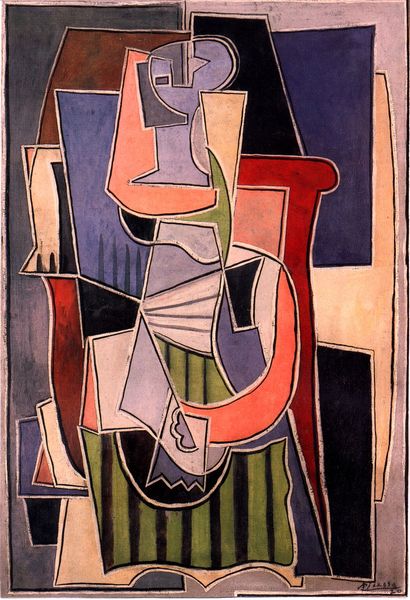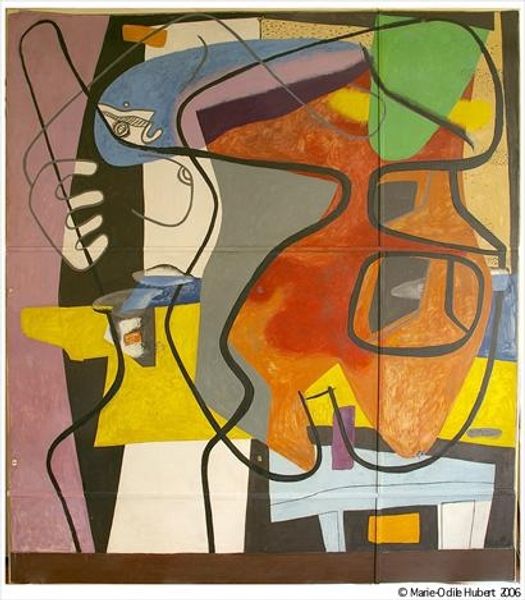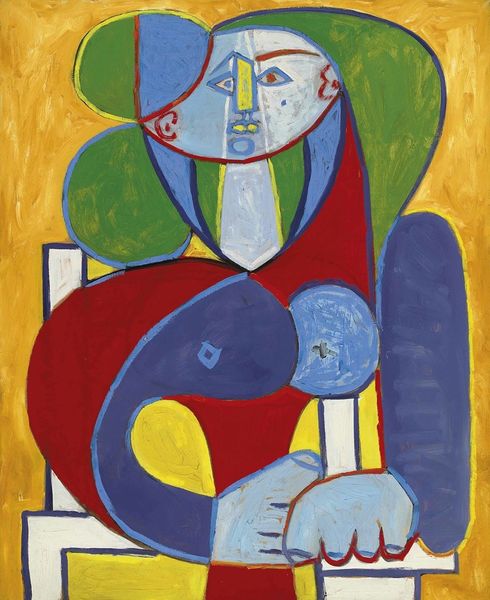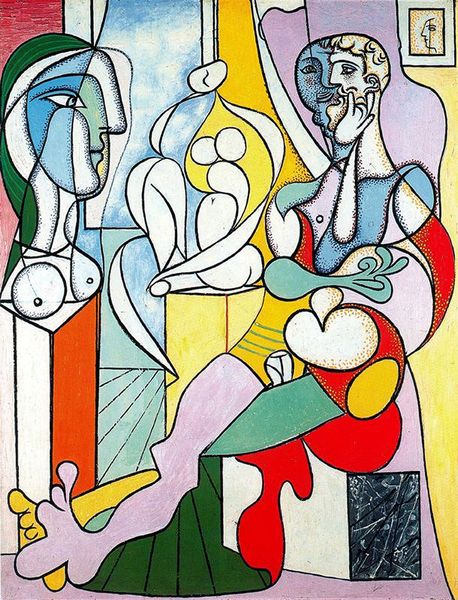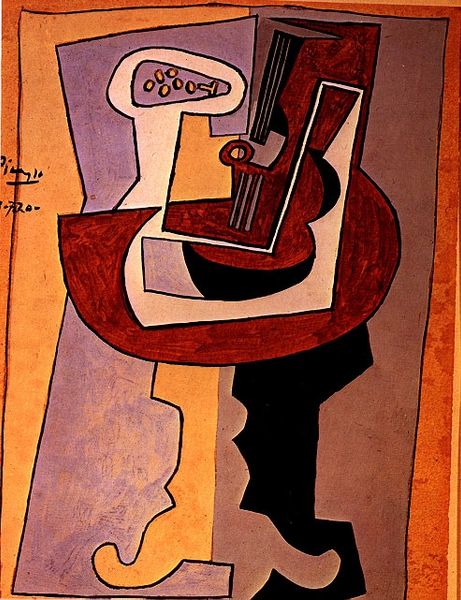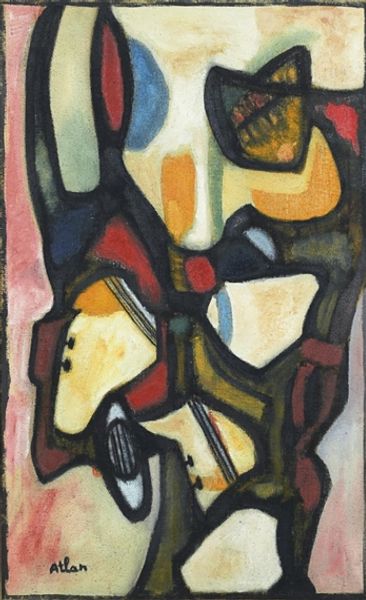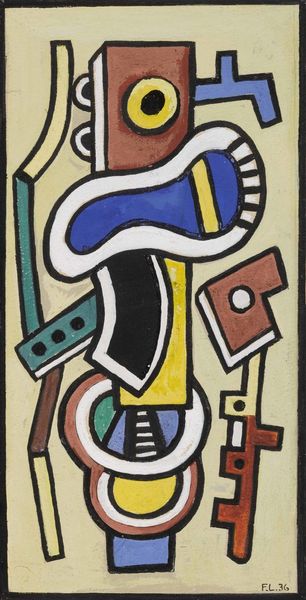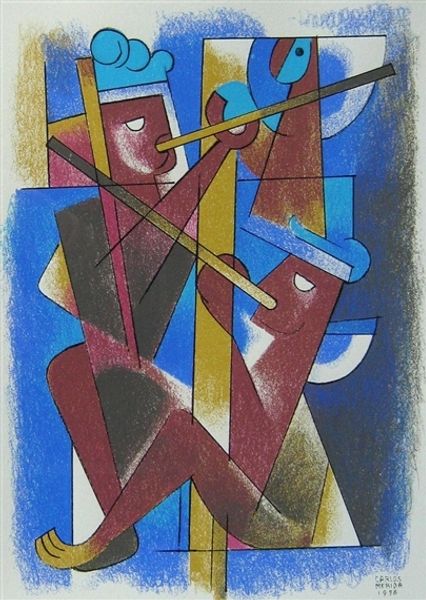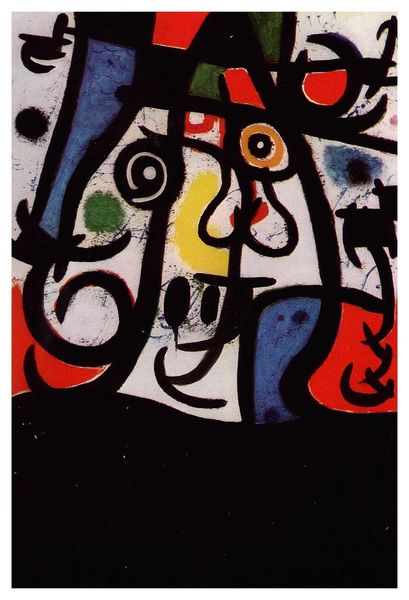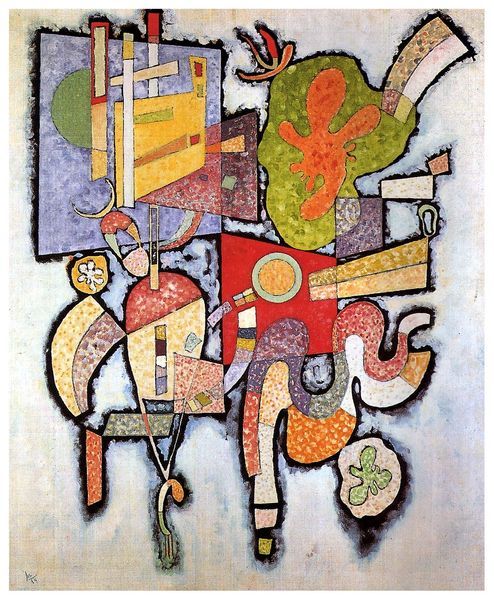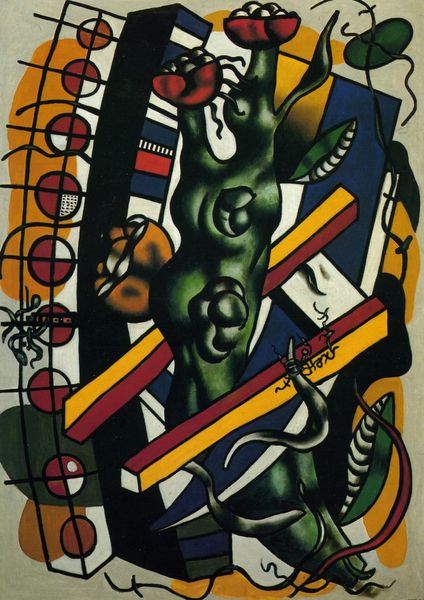
painting, oil-paint, acrylic-paint
#
portrait
#
cubism
#
painting
#
oil-paint
#
pop art
#
acrylic-paint
#
figuration
#
abstraction
#
modernism
Dimensions: 116 x 89 cm
Copyright: Pablo Picasso,Fair Use
Curator: Allow me to introduce you to "Woman sitting in an armchair," an oil on canvas completed by Pablo Picasso in 1949. Editor: Well, my initial reaction is...disquiet. The colors, the fractured perspective—it creates a real sense of unease. Curator: Indeed. The composition embodies Picasso's signature Cubist style. Note the fragmented form of the woman, rendered through geometric planes and distorted perspectives, pushing against traditional portraiture. The artist manipulates space and form, presenting multiple viewpoints simultaneously. Editor: I find it hard to look past the date it was created, a period defined by post-war anxiety and the nascent Cold War, when social mores were in flux. Picasso, although not officially aligned, was known to have sympathies with communism. This distorted depiction of womanhood feels deeply connected to the era’s social and political tensions. Is he commenting on women’s constrained role? Or maybe the trauma of a world irrevocably reshaped by war? Curator: The interplay of positive and negative space, alongside the limited palette, certainly intensifies the visual impact. I encourage you to examine how the sharp angles and bold lines construct a powerful dynamic. See how the black and white head at the top isolates the figure? Editor: The "head," presented almost like an icon, makes me think about how Picasso positions himself in relation to women—subjectifying them, containing them within the frame of his own vision, reducing them to a symbol. Do you think the chair serves as a cage? Curator: Perhaps, but note how the simplification of form allows for a deeper engagement with the underlying structure of the subject. It challenges our perceptions. Editor: Challenging perceptions while potentially perpetuating a power dynamic. Art rarely exists in a vacuum. Ultimately, as we engage with the composition, we should question the role of the artist. Curator: Indeed. I will consider that as I enjoy reflecting on Picasso’s skillful orchestration of line and form. Editor: Absolutely, an experience that requires acknowledging art's inescapable engagement with power.
Comments
No comments
Be the first to comment and join the conversation on the ultimate creative platform.
